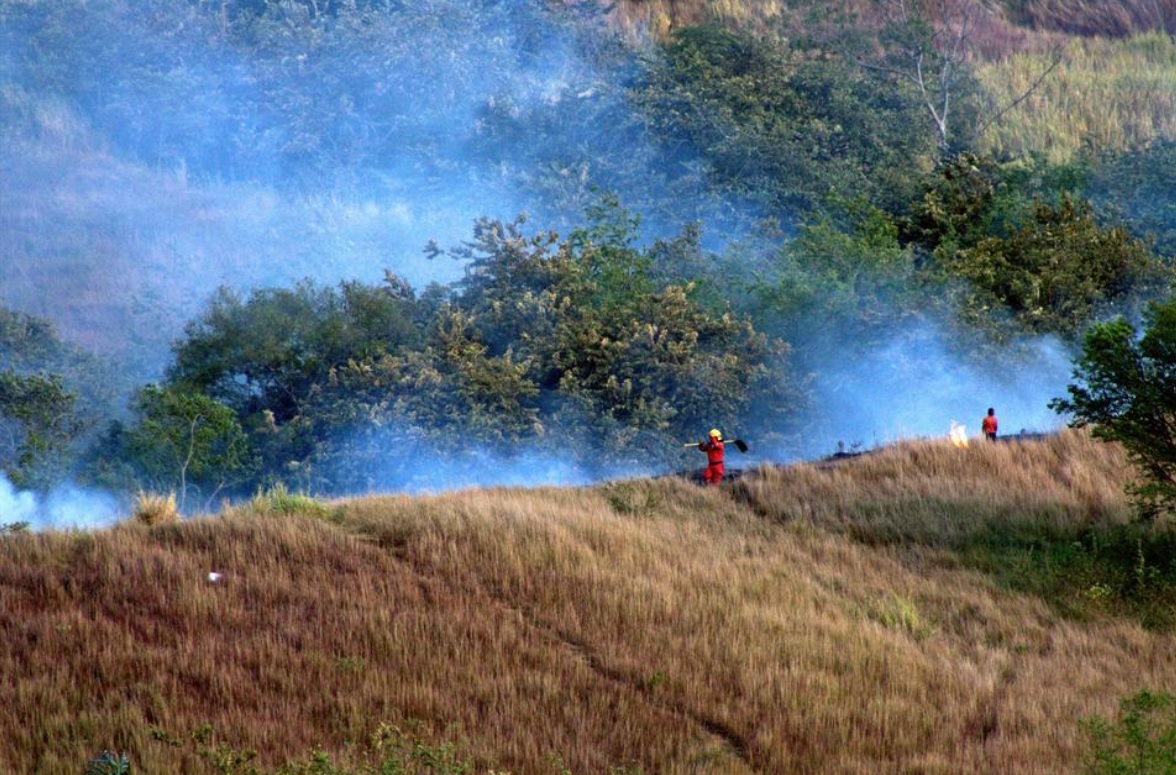
by Robyn H. Smith
Oregon’s Beef Blog
“All of the pasture on the ranch was destroyed. Winter wheat for fall, winter pasture, gone,” said rancher, David Brewer. David runs his cattle operation on 2,800 acres outside of The Dalles, Oregon. David roughly estimated that of his 2,800 acre property, 1,500 acres were destroyed by the Substation fire.
It took David awhile to consider how much of his property was lost. The thought hadn’t crossed his mind because the main concern for those impacted by the Boxcar and Substation fires was the safety of family and neighbors. “The herd was in the creek-bed, so I knew they were fine. I was spending 24 hours a day in the tractor discing my neighbor’s property, trying to protect us both,” he said.
Brewer operates a grass-finished beef operation with diverse grazing techniques, including sunflower and canola fields. He attributes these diverse crops to subduing the flames and saving some of the structures on his property. “I knew once it reached the wheat, there was nothing I could do, but the alternative crops, the canola, it created a barrier and the fire died-out over there pretty well,” he said.
Hearing Brewer’s experience with the Substation fire and how he attributed his crop diversity to protecting some of his property, raises the question of how ranchers and Wasco County officials can better prepare for the inevitable Oregon fire season?
The Planning Department in Wasco County considers wildfire prevention and protection a top concern. In 2017, the department applied for a unique program called Community Planning Assistance for Wildfire or CPAW and Wasco County was selected as one of only eight areas in The United States to receive the program.

CPAW is a grant-funded program, used to integrate wildfire mitigation in a community’s development planning process. Molly Mowery, CEO of Wildfire Planning International and Kelly Johnston, a Fire Behavior Analyst presented CPAW to The Dalles community on July 23rd, 2018. Mowery and Johnston have conducted a site visit of the Wasco County area over the past few seasons and will return again in the fall. With each site visit they collect more data specific to the Wasco region and information about how fire will act and react in the area.
“The goal is to produce a product recommendation that the fire department and district can use to improve planning and we are doing this by combining natural resource experience and defendable science,” said Mowery.

After the final site visit, CPAW will hand over an interactive Risk Assessment map of Wasco County to the Planning Department. From there it’s in the department’s hands to use and update the map each season.
“As this map is updated, they’ll be able to see how the fuel in a certain area will change in the next five years and they’ll be able to determine the fire risk spanning the next 25-35 years based on recent impact,” said Johnston.
During the meeting, some members of the community expressed their concern at CPAW’s current risk projection because the gray area, considered agriculture land, was labeled “non-burnable”. Furthermore, the gray area on the map was directly impacted by recent fires.

Vicki Ashley, a resident and long-time OCA member was impacted by the Boxcar fire, her property was projected in the yellow, low-risk zone on the CPAW map. “The main concern was our fence because of our bulls. We had about two miles of fence destroyed that needed fixed immediately,” she said.
It was a consensus that the program would need to be adjusted to consider the current Ag-processing of the land. The lack of public grazing and the areas which used to be grazed, but are no longer, contribute to the fire hazard risk.

Johnston and Mowery said they have a lot to consider as they continue to evolve the program for the county. “Factors such as wind, human-fault, and the change of land use practices over the past few years will continue to affect our results,” said Johnston. The CPAW members will return again in the fall for their last site visit.
The fires in Wasco County are under investigation as man-made acts of arson.

The toll on local ranchers is immeasurable. Breanna Wimber, Secretary of the Northwest Livestock Association and local Farm Insurance Agent, says for the farmers and ranchers, the work has just begun.
“I have crop insurance to cover my wheat loss, the challenge will be finding pasture for the winter, and the long-term impact from soil erosion. As far as financially, I have a lot of fence that needs repaired,” said David Brewer.
For more information on the CPAW program Click Here
If you have suffered a loss as a result of the 2018 Oregon fire season, Click Here to apply for Wildfire Assistance from the Oregon Cattlemen’s Association.
Disclaimer: Articles featured on Oregon Report are the creation, responsibility and opinion of the authoring individual or organization which is featured at the top of every article.

